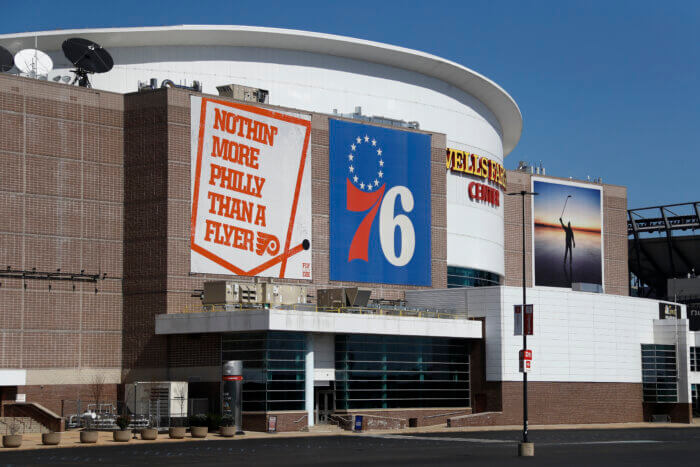It’s a sentiment so common it’s become cliche: The mercury starts rising and the crime rate does, too.
A week into summer, Philadelphia has already experienced spikes in both, with temperatures reaching 97 degrees and at least 24 injured – five fatally – in 15 separate incidents of violence between Saturday and Tuesday morning alone.
“Historically, the summer months have been most problematic, beginning around April when it starts to warm and continuing, in most cases, to October,” Deputy Police Commissioner Kevin Bethel confirmed, adding that shootings and homicides seem to be the crimes most affected by the season.

Friends and family mourn the loss of Melanie “Zee” Colon, shot in May
According to Philadelphia police statistics, there were 86 fewer violent crimes during the week ending January 22, 2012, when the average high temperature was 40 degrees, than this past week ending June 24, when the average high was 88 degrees – a reduction of nearly 25 percent.
Veteran criminologist Ellen Cohn, who has been studying the temperature-crime connection for over 30 years, said it is not specific to Philadelphia. “We’ve done different studies in different states and countries – I’m working with a colleague in New Zealand using data from South Africa and we’re still seeing a correlation there,” she said.
“We’ve studied a number of other weather variables – rain, snow, air pressure, humidity – sometimes they show a relationship, sometimes they don’t. Temperature is very consistent, though.”

Point Breeze bedroom of two young children, allegedly stabbed to death.
Cohn is a proponent of routine activity theory, which dictates that crime occurs when three factors converge: a motivated offender, a suitable target and the absence of a capable guardian to deter or intervene in an incident.
Those elements, according to Cohn, are more likely to intersect when people deviate from their daily routines, partially explaining why crime rises in the summer months when schools let out and people are more likely to go on vacation. She has found similar spikes occur on major holidays that disrupt workday schedules.
“A lot of crime is impulsive, it’s opportunistic,” she said. “If you’re at work or if you’re in a classroom, the opportunities aren’t there, the motivation’s not there and the target’s not there because there are capable guardians around.”

Lot where a passerby found the body of NoLibs waitress Sabina O’Donnell in May 2010.
In the summer months, people also tend to spend more time outside, providing a greater number of chances to victimize and be victims. “We believe [the temperature correlation] may be most related to the increased social interaction
between people,” said International Journal of Biometerology editor Scott Sheridan, whose work has also centered around routine activity theory.
Bethel made some similar observations. “I don’t think it takes a brain surgeon to
recognize the summer months bring more people out and there’s more
increased contact, particularly as it relates to some of the negative
dynamics as they play out in these communities,” he said.
“The chance you see that person you’re having issues with increases
substantially. … You’ve got the heat, school’s out – the variables are
there. All you need is a triggering event.”

An all-too-common city sight, especially during the summer months.
Cohn admitted the routine activity premise alone can’t account for all temperature-related violence spikes. “Heat, in itself, regardless of other things, does have an effect,” she said. “For example, on an average day, it’s going to be hotter at 3 in the afternoon than it will be at 10 in the evening, but there’s more crime at 10 at night because of the routine activity issue.”
“However, there’s still more crime at a hot 3 o’clock and a hot 10 o’clock than at a cool 3 o’clock and a cool 10 o’clock.”
Representing another school of thought, Manchester Metropolitan University researcher John Simister said the phenomenon can be better explained by the physiological impact of heat on human behavior.
He believes high temperatures may contribute to heightened adrenaline levels, which causes aggression. “If people are very hot, they may overreact to a trivial incident – e.g. another driver drives badly,” he said. “If an angry person has a gun, it could end badly.”

West Philadelphia doughnut shop employee burned last month when an angry customer threw hot coffee on her.
Deputy Commissioner Richard Ross also raised the issue of manpower. “We worry about summer in the
PPD for other reasons,” he said. “Because of work rules, we have to give
everybody summer vacation between May and September 30, so that clearly
suggests we’re going to have fewer people on the street.”
He further contended that, when it boils down to it, regardless of the temperature or season, crime patterns are frustratingly difficult to pin down and virtually impossible for investigators to forecast. “It stands to reason that sometimes, when it comes to people and violence, there is no rationalizing why it’s done and when it’s done,” he said.
“Someone gets the inclination to pick up a gun and shoot somebody over the dumbest stuff imaginable – which it is. How can you predict when it’s going to happen and why? What we always try to do is respond to acts likely to be retaliatory in nature because I don’t have a crystal ball.”




























